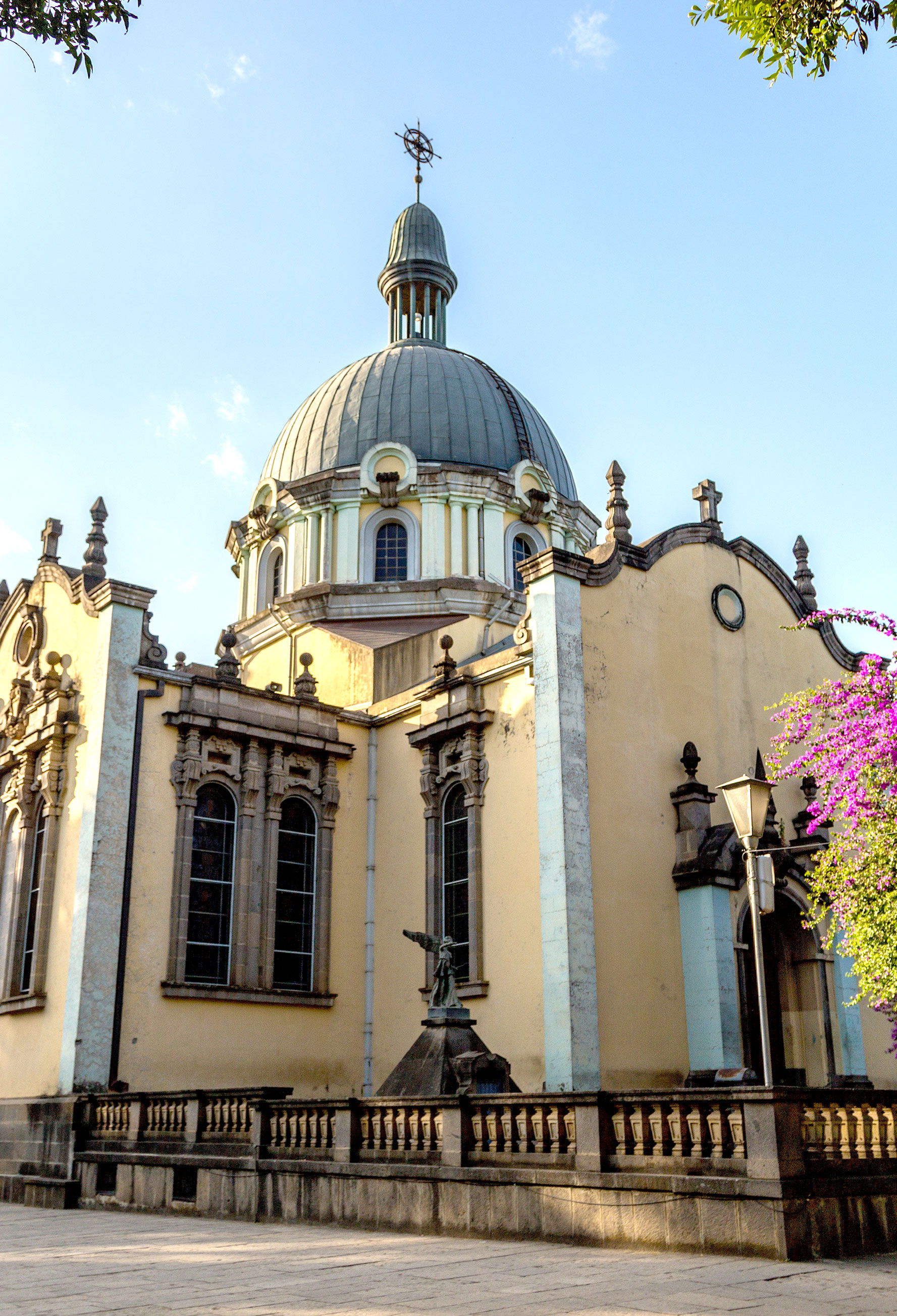Some travelers are drawn to locations high up in mountain ranges, offering breathtaking views of sprawling landscapes below. When the destination is the capital city of a country, it often makes a place even more intriguing. The combination of a high altitude and national importance can create a unique urban character — as found in these 10 highest-elevation capital cities around the world.
10. Nairobi, Kenya
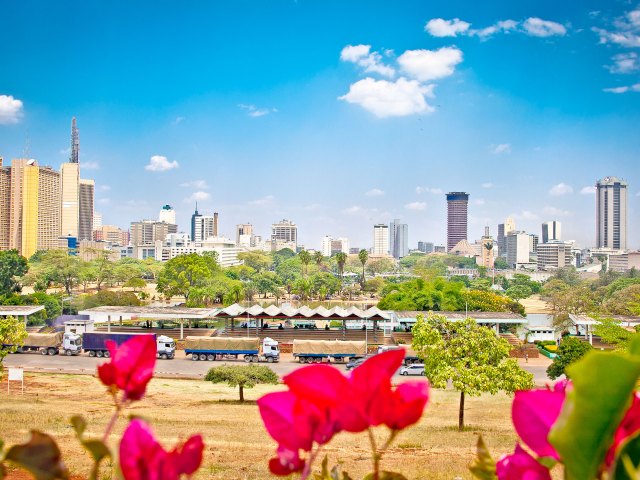
Elevation: 5,889 feet above sea level
With a name derived from the Maasai phrase enkare nyrobi, meaning “cool water,” Nairobi is the bustling and modern capital of Kenya. The foundations for the East African city, originally an area of swampland, were laid in 1899. British colonists established a railway depot here due to its strategic location between the cities of Mombasa, Kenya, and Kampala, Uganda. It also had an elevation that offered cooler, more inhabitable living conditions. Incorporated as a township in 1900, the city replaced Mombasa as the capital of Kenya in 1907.
Surrounded by game reserves, Nairobi today is often a jumping off point for safaris, with many visitors arriving for the chance to spot Africa’s famous Big Five mammals. Other popular area sights include Nairobi National Park, Sheldrick Elephant Orphanage, the Karen Blixen Museum, and the vast Uhuru Park. Experience the city’s vibrant local shopping scene at markets such as City Park Hawkers and Maasai Market.
9. Tehran, Iran
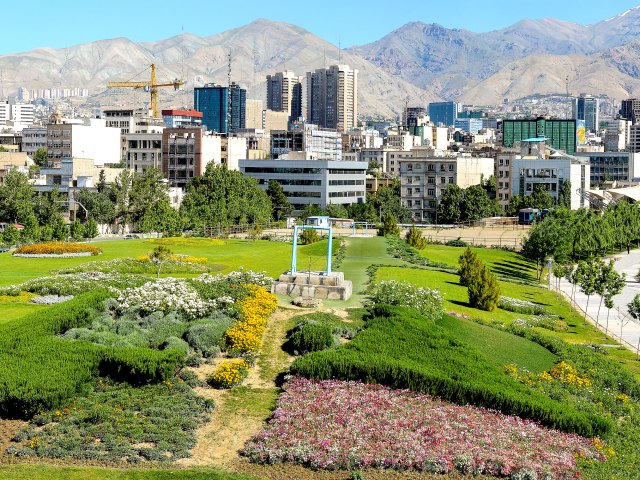
Elevation: 6,003 feet
Tehran is perched in the southern foothills of the Alborz Mountains in northern Iran. The city is notable for its dramatic elevation changes — from 2,952 feet to a peak of 6,003 feet above sea level — and varying landscapes, which range from desert in the south to mountains in the north. Described as a small village in the 11th century, Tehran later grew into a prosperous market town famous for its pomegranates. Shah Agha Mohammad Khan, founder and first ruler of the Qajar dynasty of Iran, pronounced it the capital in 1786.
This lively metropolis is a prime example of old-meets-new, as witnessed in architectural gems like the royal Golestan Palace and modern Milad Tower. Another emblem of the Iranian capital is Azadi Tower, built to celebrate the Persian empire’s 2,500th anniversary. Visitors can also delve into ancient and fascinating commercial traditions at the Tajrish Bazaar and Tehran Grand Bazaar.
8. Mexico City, Mexico
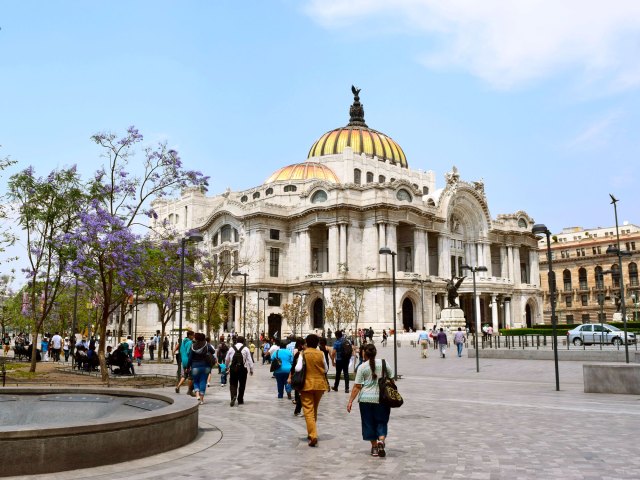
Elevation: 7,350 feet
The world’s fifth-most populous city, Mexico City is a fast-paced megalopolis famed for architectural wonders, fascinating museums, urban parks, and street food. Mexico’s modern capital is built upon the ruins of Tenochtitlan, the ancient capital of the Aztec empire that dates back to around 1325. Construction of Mexico City began in 1521 after the foundation of New Mexico, and it has been the nation’s capital ever since.
Recognized as a UNESCO World Heritage Site, the historic center of the city is the Zócalo (formally known as the Plaza de la Constitución). The main square is framed by iconic landmarks such as the Metropolitan Cathedral, the Templo Mayor Aztec ruins, and the Templo Mayor Museum. Elsewhere in Mexico City, don’t miss attractions such as the Palacio de Bellas Artes, Frida Kahlo Museum, hip neighborhoods like Condesa and Roma, and Bosque de Chapultepec — the oldest and largest urban park in Latin America.
7. Sana’a, Yemen
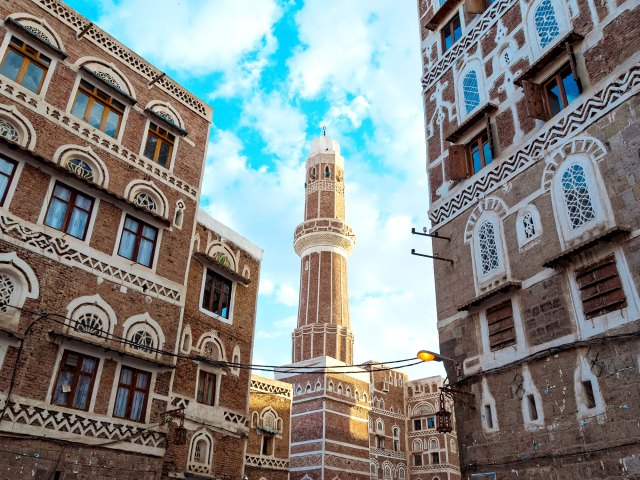
Elevation: 7,382 feet
In the shadow of Mount Nuqum, the walled city of Sana’a has been inhabited for over 2,500 years. According to local folklore, Yemen’s capital was created by Shem, one of the three sons of the biblical Noah. Designated as a UNESCO World Heritage site in 1986, the Old City features eye-catching architecture built of rammed earth and brick towers decorated with geometric patterns.
Narrow cobblestone streets twist and turn throughout Sana’a, which is home to over 100 mosques and over a dozen hammam bathhouses. Notable sights include the seventh-century Great Mosque of Sana’a, Al Saleh Mosque, and the Dar al-Hajar rock palace. Entering the Old City via the Bab Al Yemen gate leads to the vibrant Souk Al-Milh (Salt Market), where stalls dedicated to everything from spices to dried fruits, handicrafts, and silk showcase Yemeni cultural traditions.
6. Asmara, Eritrea
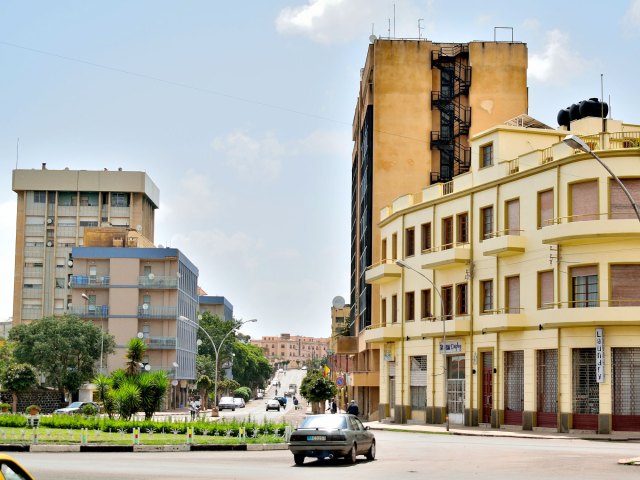
Elevation: 7,628 feet
Asmara is situated at the northern tip of the Ethiopian Plateau, a highlands region that stretches across Ethiopia and central Eritrea. It was once an ancient village split under the control of four independent clans. According to legend, it became a united village when the women of the clans persuaded the men to join forces and fight off bandits. The village’s original name was Arbaete-Asmera, which means “the four united.”
In the 1890s, the modern-day layout of the city began to take shape, and the city was declared the capital of the Italian colony of Eritrea. Boasting eclectic architecture, Asmara is a prime example of a colonial planned city. It features an orthogonal grid with radial street patterns, civic plazas, and green spaces. The city also features impressive architectural diversity, from the colonial Asmara Cathedral to the futuristic, airplane-shaped Fiat Tagliero building.
5. Addis Ababa, Ethiopia
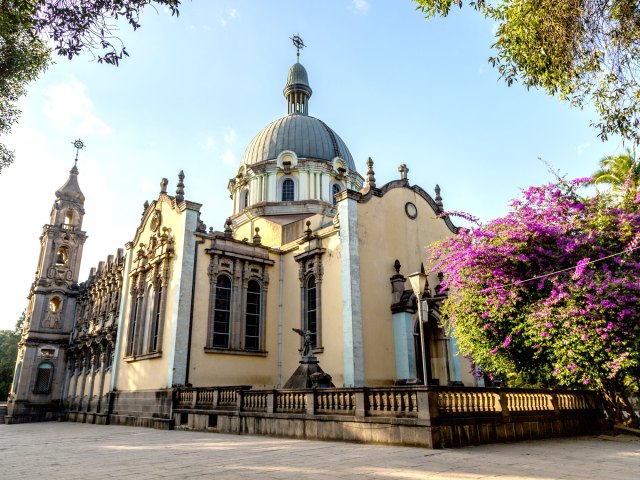
Elevation: 7,726 feet
Located in the shadow of the Enoto Mountains in the central region of Ethiopia, Addis Ababa is the highest capital city on the African continent. The location was originally chosen as a royal resort by Empress Taytu Betul, the wife of Menelik II, King of Shewa, in the 1880s. Its name means “new flower” in Amharic. The city served as the capital of Italian East Africa from 1935 to 1941, during which time modern houses and paved roads were built.
Addis Ababa today is a fascinating blend of ancient and modern architecture, museums, markets, and mouthwatering cuisine. Visitors can spend time at cultural institutions such as the National Museum of Ethiopia, home to a vast collection of sub-Saharan African artifacts, and the Ethnological Museum, housed inside the former palace of emperor Haile Selassie. A sensory overload awaits at the city’s Merkato, home to spice traders, homeware hawkers, and food stands. Be sure to try injera, a spongy sourdough pancake used to mop up the sauce of meat and vegetable dishes.
4. Bogotá, Colombia
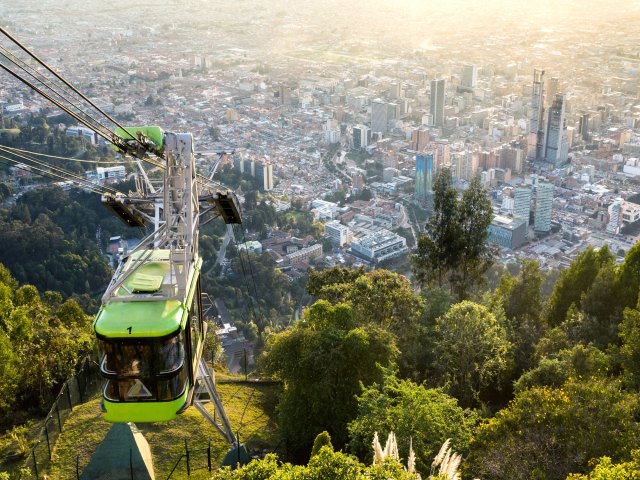
Elevation: 8,660 feet
Bogotá is the melting pot of Colombia, a high-altitude city enveloped by a sea of green and the Andes mountains to the east. The area on which the city stands was once occupied by the Muisca peoples, who thrived for centuries in the surrounding mountains. The Spanish arrived in the 1530s and laid the foundations for modern-day Bogotá, which became the capital of the Viceroyalty of New Granada territory and a hub of Spanish influence in the region. It remained the capital after Colombia achieved independence in 1819.
The hub of the city is La Candelaria, a colorful and walkable neighborhood packed with Bogotá’s best museums and several iconic landmarks. Visitors can check out the Botero Museum of Latin American art and Colón Theater for music and performing arts. Plaza de Bolivar is home to eclectic architecture, while Simón Bolívar Park offers boating, biking, and mountain views. Foodies will find the chance to sample ajiaco santaferño (potato soup), tamales, and other delicacies at almost every corner.
3. Thimphu, Bhutan
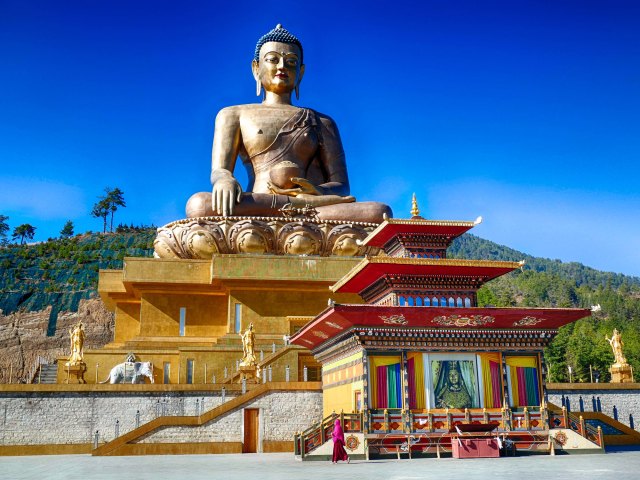
Elevation: 8,688 feet
Nestled amid a dazzling green valley in the shadow of the Himalayas is Thimphu, the capital of the Kingdom of Bhutan. A small yet busy city, Thimphu holds the honor of being one of the only world capitals with no traffic lights. Instead, police officers regulate the traffic from booths at major intersections.
A stroll around the atmospheric streets of Thimphu offers visitors a glimpse of fascinating Buddhist architecture, including the Tashichho Dzong fortress and monastery and the artistic Changangkha Lhakhang temple. Experience Bhutanese arts and culture at the Folk Heritage Museum Kawajangsa and Royal Textile Academy. From Thursday to Sunday, the city’s Weekend Market is the place to shop for local specialties — from elaborate masks to yak cheese, dried chillies, and everything in between.
2. Quito, Ecuador
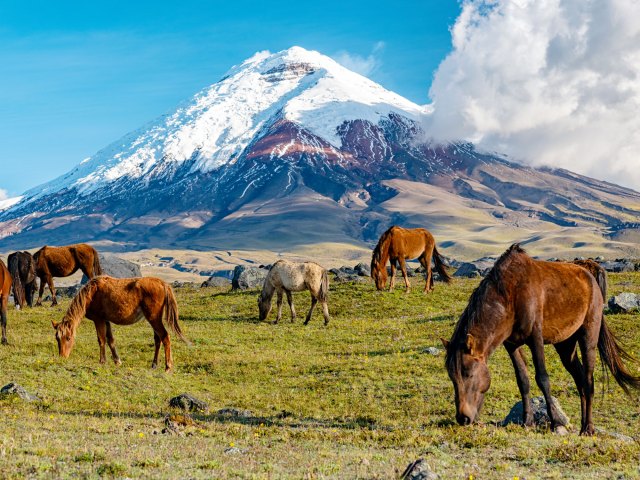
Elevation: 9,350 feet
At the base of the soaring Pichincha volcano and bordered by the Andes, Quito offers an intriguing blend of Quitu, Incan, and Spanish colonial history. First inhabited by nomadic tribes, modern Quito was erected by the Spanish in the 1500s on the site of an Inca settlement. It’s one of the oldest capitals in South America, and in 1978, it became one of the first cities declared a World Heritage Site by UNESCO.
Colorful streets and grand plazas characterize Quito’s historic center. Head to tree-lined Independence Square, surrounded by Quito Metropolitan Cathedral and the Carondelet Palace, stopping to snack on local delicacies such as locro Quiteńo (cheese and potato stew). A mild year-round climate makes the city a great destination for scenic walks with views of the the Panecillo Forest and Parque Metropolitano Guangüiltagua.
1. La Paz, Bolivia
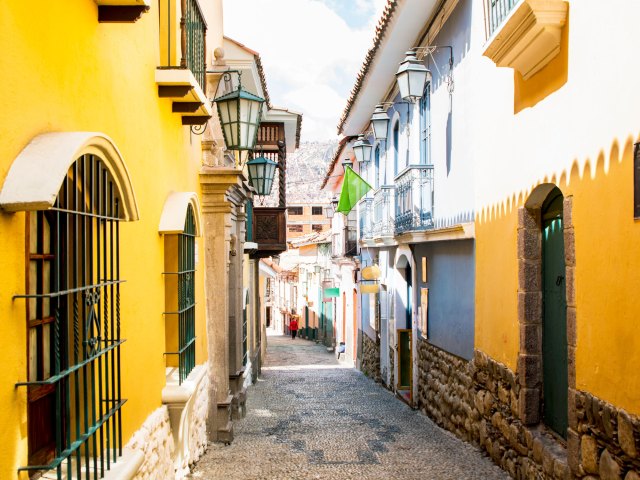
Elevation: 11,942 feet
Positioned nearly 12,000 feet above sea level in the Andes Altiplano plateau, La Paz is the world’s highest capital city. Founded by the Spanish in 1548 on the site of an Inca settlement, the city is characterized by a mix of Aymara indigenous traditions, colonial landmarks, busy markets, and vibrant nightlife. However, the city shares its Bolivian capital status with Sucre (also located at a lofty elevation of 9,220 feet). La Paz, the larger city, is the seat of government and home to the executive branch, while Sucre is the judicial and constitutional capital.
Visitors can get a feel for the mountain metropolis of La Paz from the snow-capped Mount Illimani, reachable via the Mi Teleférico aerial cable car. Head to Plaza Murillo for major sights, including the Cathedral Basilica of Our Lady of Peace and the National Museum of Art. Colonial buildings frame nearby Plaza Mayor de San Francisco, a hub for street performers and artisan fairs. On cobblestone Calle Jaén street, museums delve into ancient Bolivian culture, while the nearby Witches’ Market offers an insight into Aymara folklore and witchcraft.
More from our network
Daily Passport is part of Optimism, which publishes content that uplifts, informs, and inspires.






